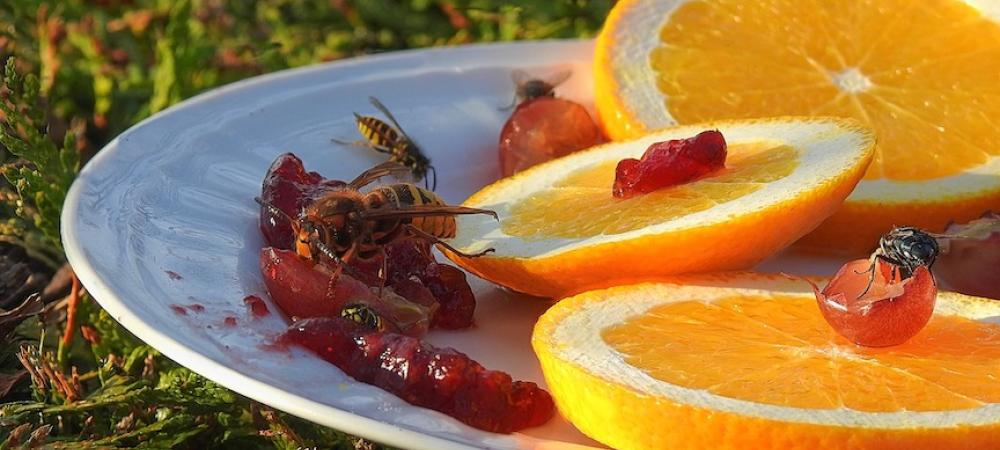Wasps vs. Bees: Understanding the Differences and Importance

When it comes to the insect kingdom, few creatures capture our attention and fascination like wasps and bees. These buzzing insects play vital roles in our ecosystems, but they often inspire mixed reactions from humans. While bees are commonly associated with pollination and honey production, wasps are often viewed as aggressive pests. In this blog, we will delve into the world of wasps and bees, exploring their characteristics, behavior, ecological roles, and the importance of their coexistence in the natural world.
1. Physical Characteristics and Differences
Both wasps and bees belong to the order Hymenoptera and share several physical similarities, including a slender body, six legs, and wings. However, there are distinct differences between the two stinging insects, allowing for easy identification.
Some of the most common types of bees include:
- Honey bees
- Bumblebees
- Mason Bees
- Sweat Bees
- Mining Bees
- Carpenter Bees
Some of the most common types of wasps include:
- Yellow jackets
- Paper Wasps
- Mud Daubers
- Bald-faced Hornets
- European Hornets
- Cicada Killers
Appearance
Bees are generally rounder and fuzzier in appearance, with dense hairs on their bodies. Their vibrant colors range from golden to black, while some species exhibit striking patterns of black and yellow stripes.
On the other hand, wasps tend to have a sleeker and more elongated body with a distinct waist. They commonly feature vibrant yellow and black or white and black patterns.
Nest Structures
Bees construct their nests in hives or burrows. Honeybees build intricate wax combs, storing pollen, nectar, and eggs. Bumblebees create nests in the ground, often utilizing abandoned rodent burrows.
Wasps, however, build paper-like nests using wood fibers or saliva mixed with chewed wood. Their paper nests can be found in various locations, such as hollow trees, branches, eaves, or underground.
2. Behavior and Lifestyle
Understanding the behavior and lifestyle of wasps and bees is crucial to appreciate their unique roles in the environment.
Social Structure
Bees are highly social insects, living in colonies with clear divisions of labor. Honeybees and bumblebees have a hierarchical structure comprising a queen, worker bees, and drones. The queen is responsible for reproduction, while workers undertake foraging, hive maintenance, and nursing duties. Drones' primary role is to mate with the queen.
Wasps, on the other hand, can be social or solitary. Social wasps live in colonies with similar divisions of labor, while solitary wasps lead independent lives, building nests and hunting for prey alone.
Stinging
Wasps are generally more aggressive than bees and are known for their ability to sting repeatedly. Their stingers are smooth, allowing them to withdraw it from the victim without injury.
Bees, on the other hand, have barbed stingers. When a bee stings, the barbs on its stinger get lodged in the victim's skin, causing the stinger to tear away from the bee's abdomen. Unfortunately, this results in the bee's death shortly after stinging. Bees sting as a last resort and to protect their hive or themselves from imminent danger.
Diet and Feeding Habits
Bees are primarily herbivores, relying on pollen and nectar as their main food sources. As they forage for nectar, bees inadvertently transfer pollen from flower to flower, playing a critical role in plant pollination.
In contrast, wasps are carnivorous predators, feeding on other insects, spiders, and even carrion. Some wasp species are also known to scavenge sugary substances, such as fallen fruit or soda, later in the year.
3. Ecological Importance
Both wasps and bees contribute significantly to our ecosystems, ensuring the balance and sustainability of various natural processes.
Pollination
Bees, with their fuzzy bodies and specialized structures like pollen baskets, are efficient and effective pollinators. They transfer pollen from the male parts of flowers (anthers) to the female parts (stigma), facilitating fertilization and seed production. This process is crucial for the reproduction and genetic diversity of plants, including agricultural crops.
Natural Pest Control
Wasps, particularly those with carnivorous habits, are valuable agents in pest control. They help keep populations of agricultural pests in check, reducing damage to crops and reducing the need for chemical pesticides. Moreover, certain wasps parasitize or prey upon insect larvae that can be destructive to forests or gardens.
Food Web Dynamics
Both bees and wasps occupy different positions in the food chain, providing sustenance for a variety of organisms. Their role as prey supports the survival of predators such as birds, spiders, and other insects, contributing to the overall biodiversity and ecological balance of their habitats.
4. Coexistence and Conservation
Given the critical roles bees and wasps play in maintaining ecosystems, it is essential to promote their coexistence and conservation.
Providing Suitable Habitats
Creating suitable habitats like flowering gardens, wildflower meadows, and insect hotels can attract and support populations of bees and wasps. Providing nesting sites, such as hollow stems or small holes in wooden structures, can encourage solitary species.
Avoiding Pesticide Use
Reducing the use of harmful pesticides helps protect these beneficial insects. Organic and sustainable farming practices that prioritize natural pest control methods are particularly important in preserving bee and wasp populations.
Educating and Raising Awareness
Increasing public awareness about the ecological significance of bees and wasps can foster a positive attitude toward these insects. Education programs and campaigns can dispel misconceptions, highlighting the importance of conserving these remarkable creatures.
Professional Wasp and Bee Removal
While bees and wasps are a vital part of the ecosystem that still doesn't mean that you want to share your backyard with them, especially if you have children or someone with a severe allergy to bees or wasps. Reach out to our team at Senate for safe and effective removal. Contact our team today to get started!

